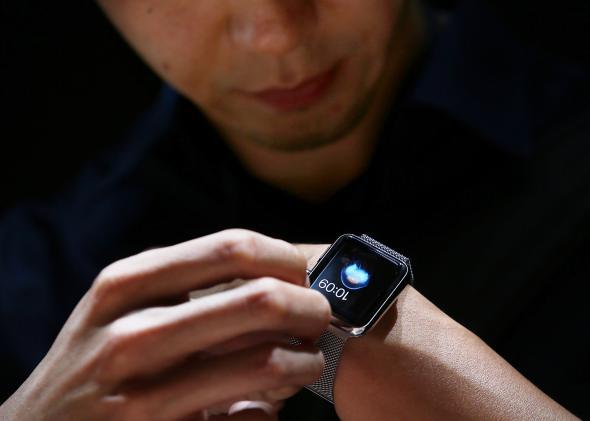Apple’s new watch will come with a suite of health-centric sensors—including, perhaps surprisingly, a barometer intended to track elevation changes during a workout and whether it’s outdoors or within a building. But for meteorologists, the advent of widespread wearable barometers is a game-changer when it comes to weather forecasting.
Last fall, after the announcement of the iPhone 6 and its barometer, meteorologist Cliff Mass wrote a giddy blog post about the promise of smartphone barometers. He said experimental results from his research team show that dense networks of mobile barometers alone can create highly accurate three-dimensional weather maps. That “almost sounds like magic” to Mass.
The implications of highly localized weather forecasts are profound. The Weather Company, which owns the Weather Channel, has used local weather forecasts to drive increased revenue through context-specific advertising for years. But beyond creating clickier ads, dense networks of barometer-enabled smartphones in India and Africa could boost local economies by aiding agriculture and other weather-dependent sectors.
The potential for smartwatches to bring about a new generation of hyper-local forecasts reminds me of the below scene in Back to the Future. App developers are already working to make that past future 2015 a reality.
Adam Grossman is the co-founder of Dark Sky, the weather app that Apple featured during its launch event for the watch earlier in March. Though he’s excited about the potential of his new Watch app, he says Apple isn’t letting developers access the on-board barometer sensor yet. Since the watch requires an iPhone to work, its own on-board barometer is essentially redundant—but that will soon change.
“I don’t think Apple wants to require an iPhone with the watch,” said Grossman. “It always takes me longer to fish my phone out of my pocket than it does to check the weather. The watch is the right place for that kind of stuff.”

Grossman hopes that future versions of Dark Sky will collect barometer data in addition to “manual entry” data, like whether it’s currently snowing or raining. After that, he’ll focus on actually using the barometer data to improve the forecast.
Another company is a bit further ahead. Katerina Stroponiati is co-founder of Sunshine, a crowdsourced weather app that’s currently in beta and recently announced a significant new round of funding. Sunshine is planning a public launch in April.
“Sunshine is a weather network based entirely on mobile, which means that instead of just using traditional weather providers like [the National Oceanic and Atmospheric Administration], we use the sensors of the smartphones to collect the data,” Stroponiati said. “The more data, the better.”
Sunshine is planning to launch in cities across the United States once it receives enough data density to show a measurable improvement over existing forecasts—San Francisco will be one of its initial focus areas. Eventually, the goal is to “build a ground observation network of millions of devices.” Sunshine doesn’t yet have a Watch app but is planning one.
In addition to collecting weather data from phones and wearables, the company plans to use distributed computing on the mobile devices themselves to generate the forecasts. That would help bypass the need for expensive supercomputers.
Though small companies like Dark Sky and Sunshine are promising big results, Mass thinks a true transformation in meteorology will only happen when device makers like Apple and Samsung start to see themselves as weather data providers. Mass currently has access to about 120,000 pressure measurements an hour—enough to improve forecasts in some cases—“but there’s 40 million [mobile barometers] out there. There’s not many people with these apps, that’s the problem.”
